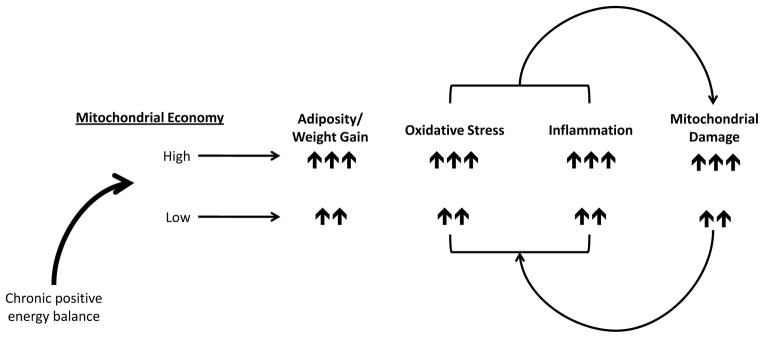Figure 1.

Schematic illustrating the hypothesized relationship between the mitochondrion and obesity. Mitochondrial economy can be relatively high (greater conservation of energy for proton pumping linked to ATP production with less generation of heat) or low (less conservation of energy for proton pumping linked to ATP production with greater generation of heat), which is influenced by mtDNA mutations that segregate with maternal geographic origins. Proposed is a positive feedback loop between mitochondrial damage and oxidant levels/inflammation contributing to adiposity. Under conditions of chronic positive energy balance (excess caloric intake, low ATP demand) mitochondria harboring mtDNA mutations associated with high economy will generate increased oxidants relative to those associated with relatively lower economy, contributing to oxidative stress and inflammatory processes. Individuals with high economy will also store calories (adipose tissue) to a greater extent than those with lower economy, however, over time, those with lower economy will also experience pathogenic levels of oxidative stress, inflammation and weight gain.
